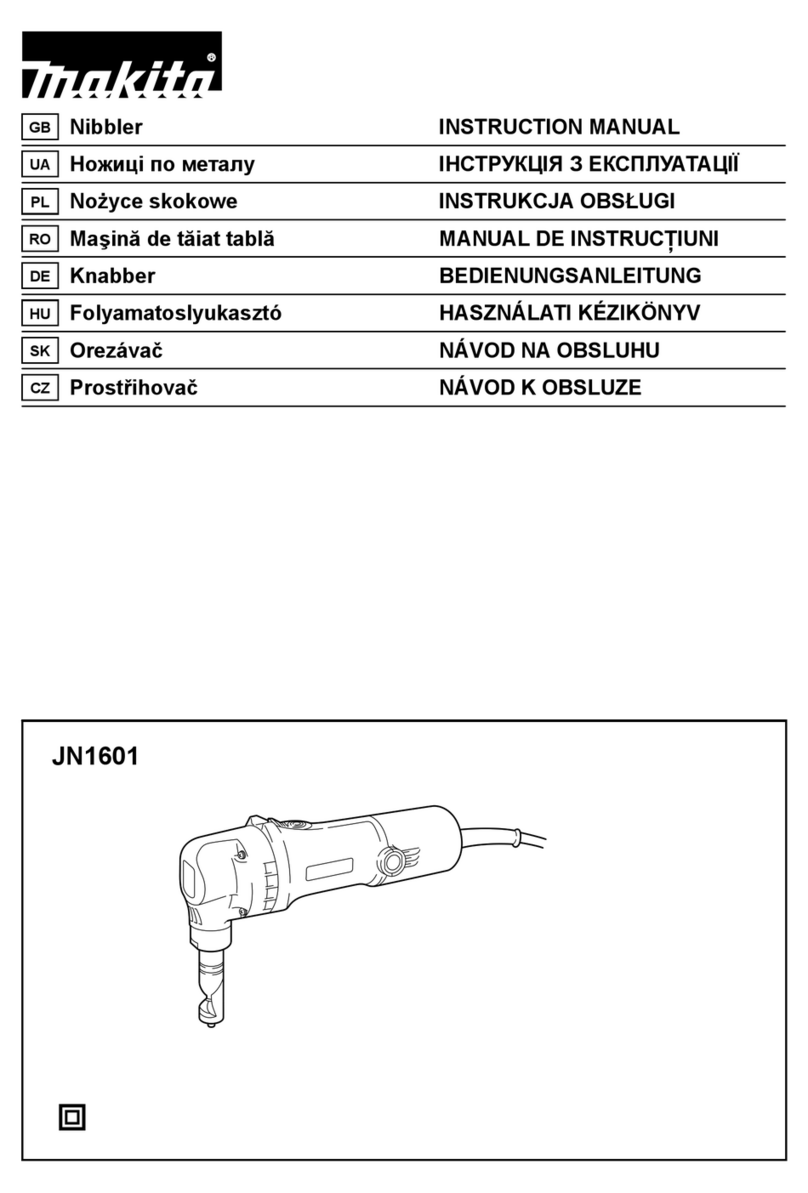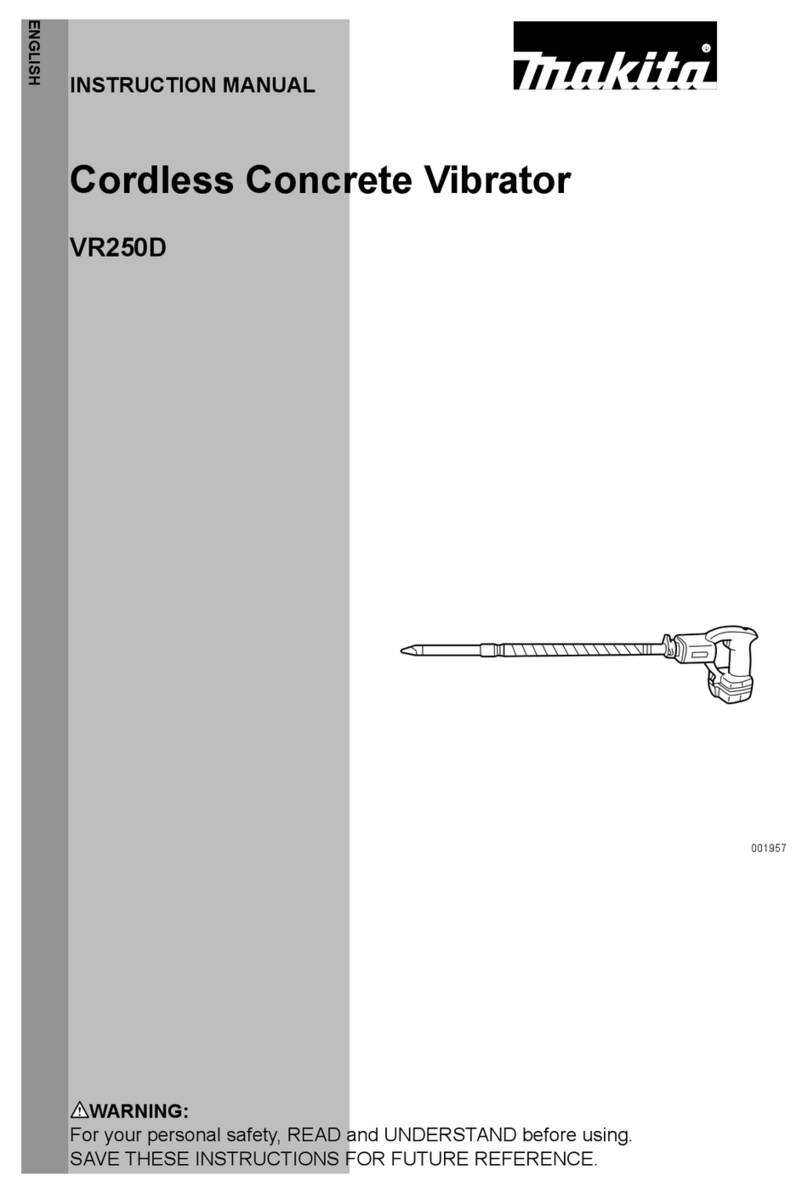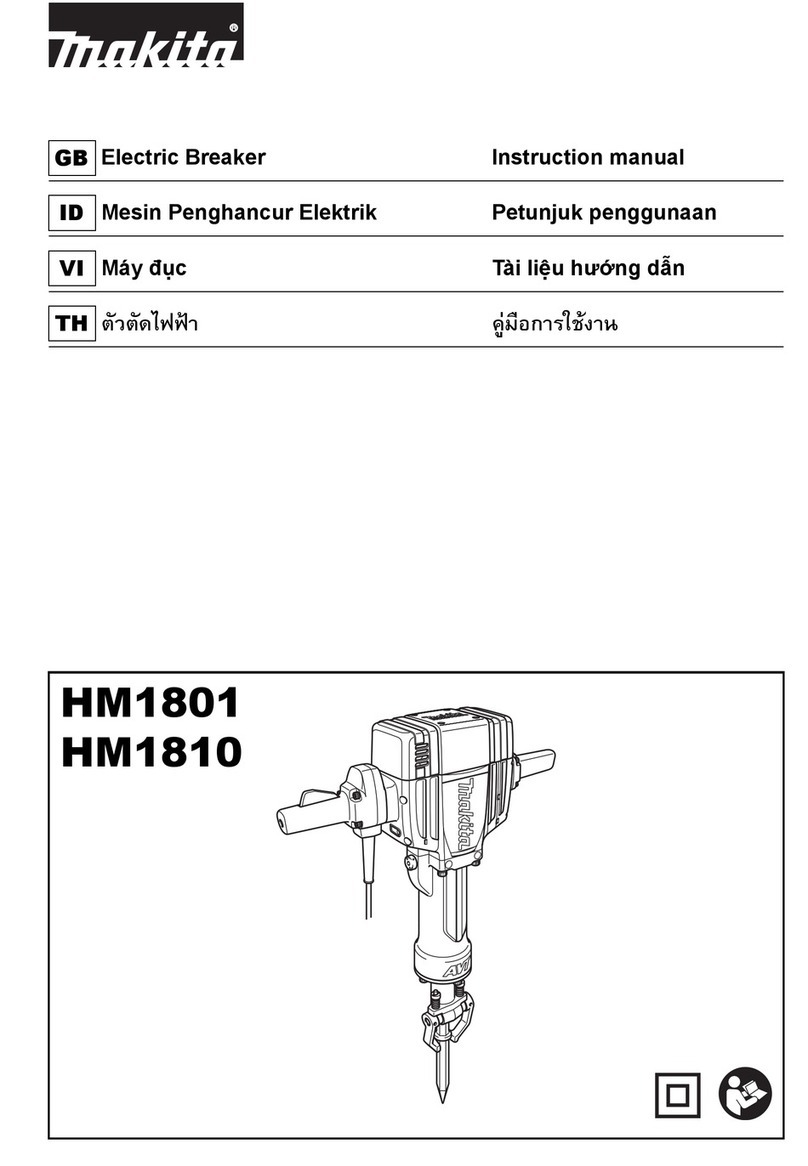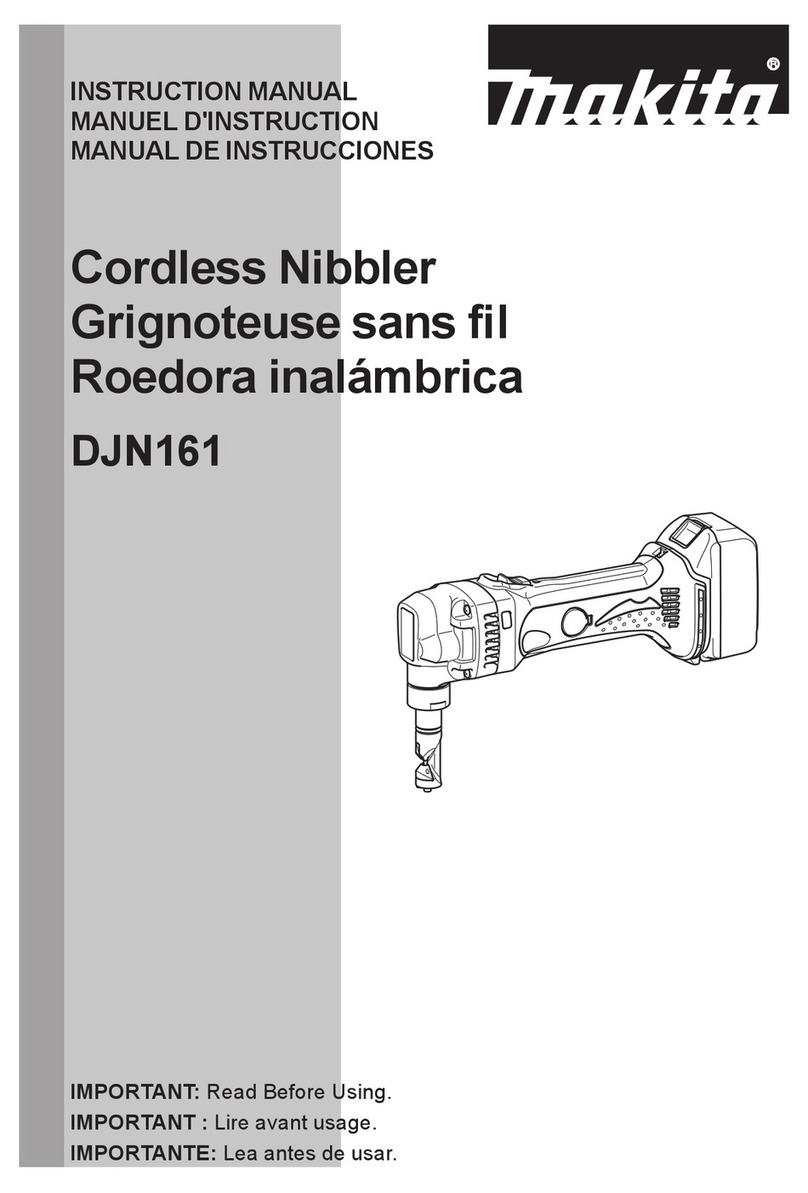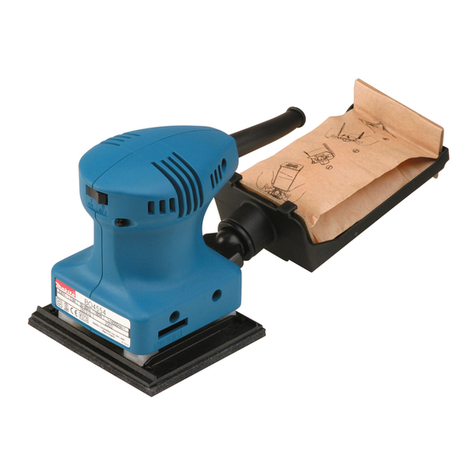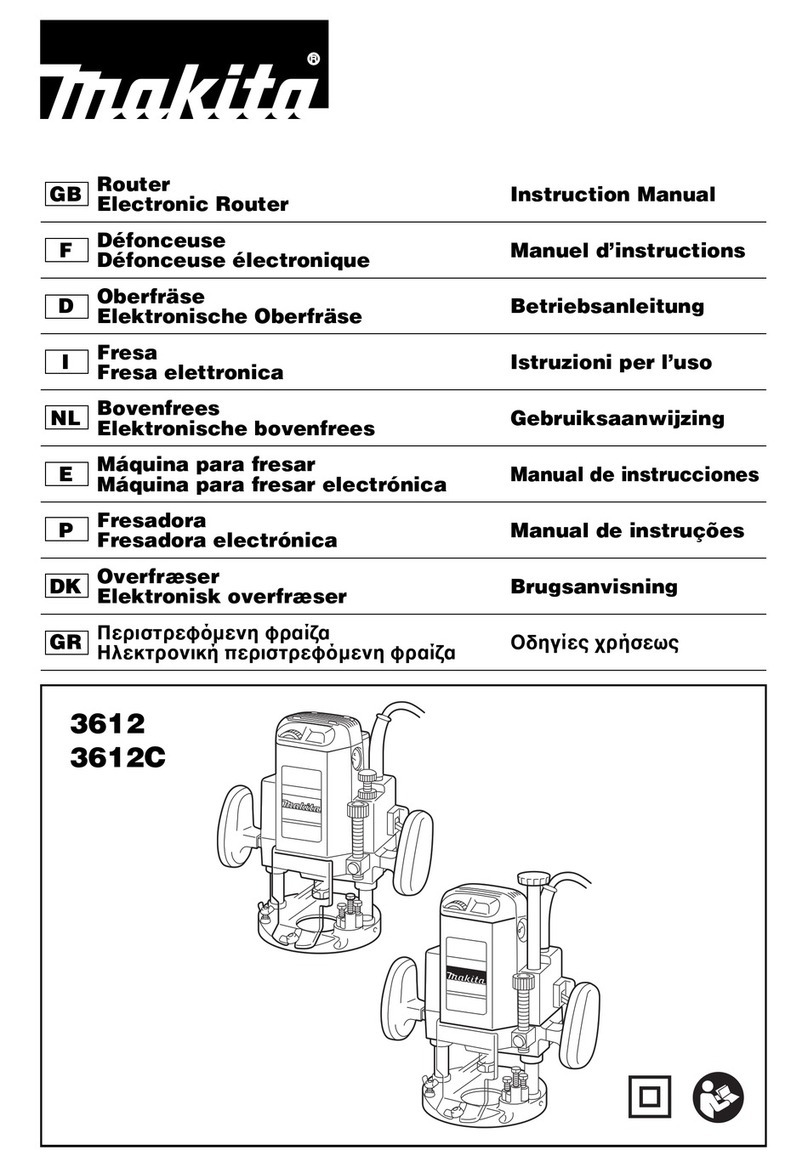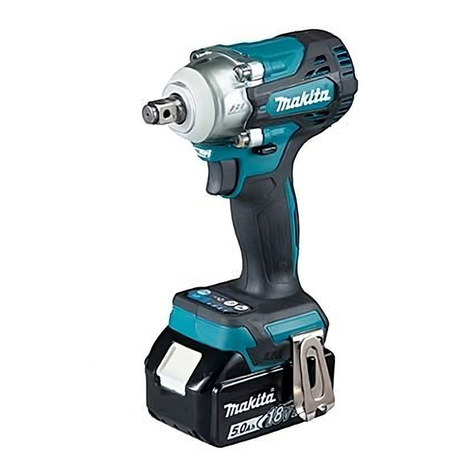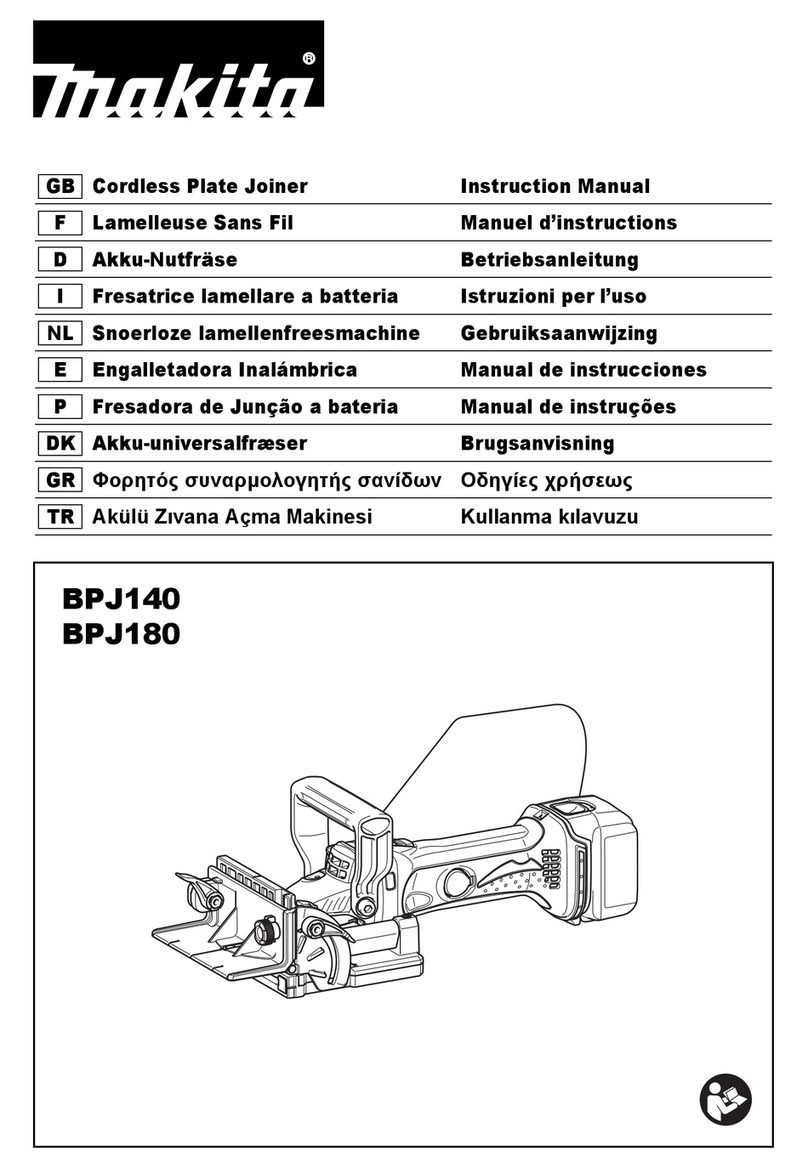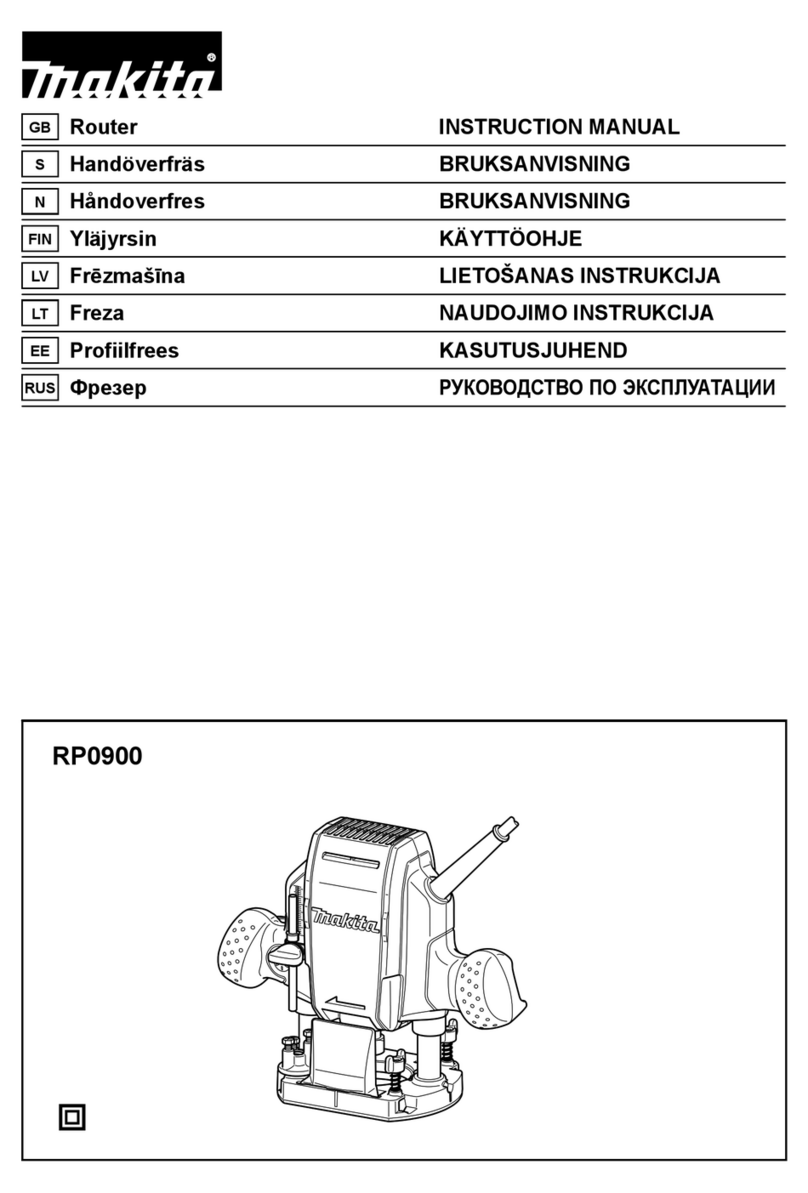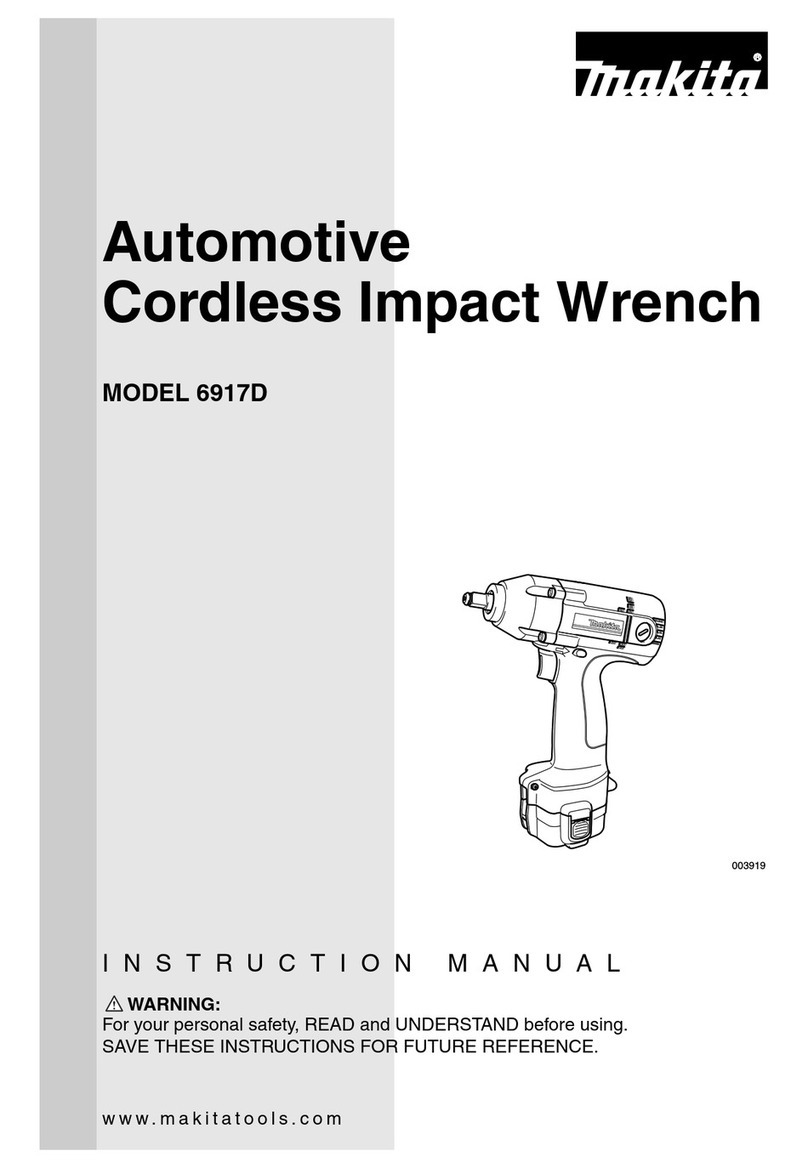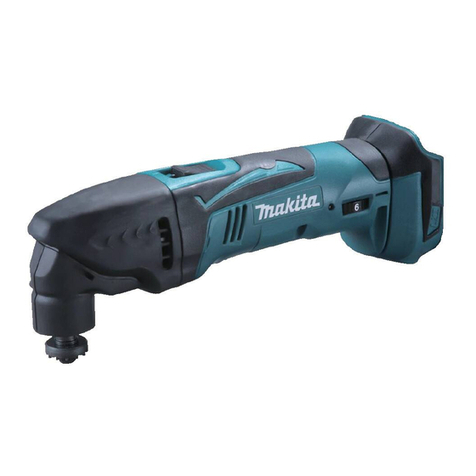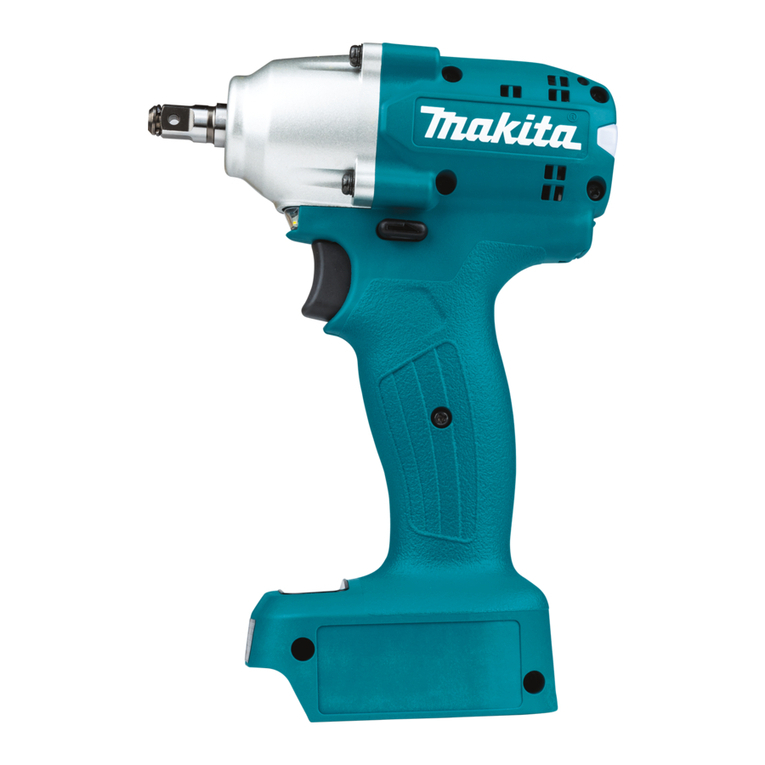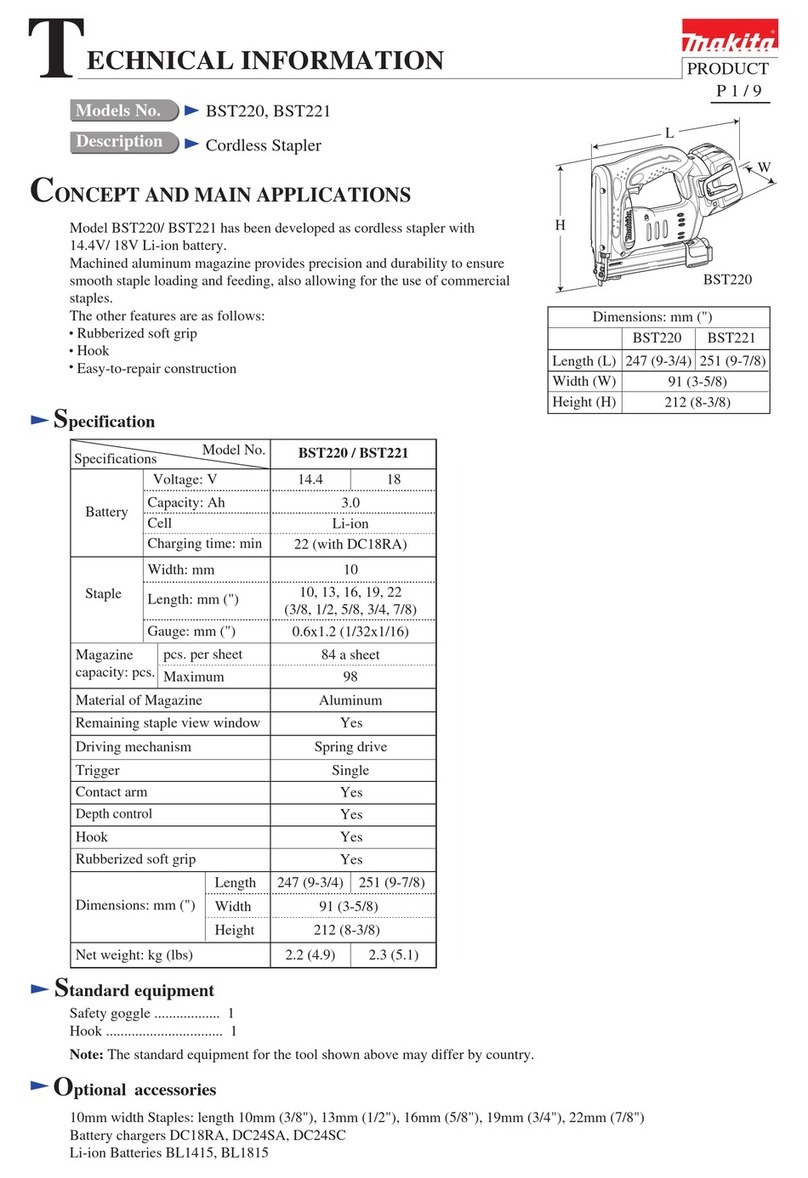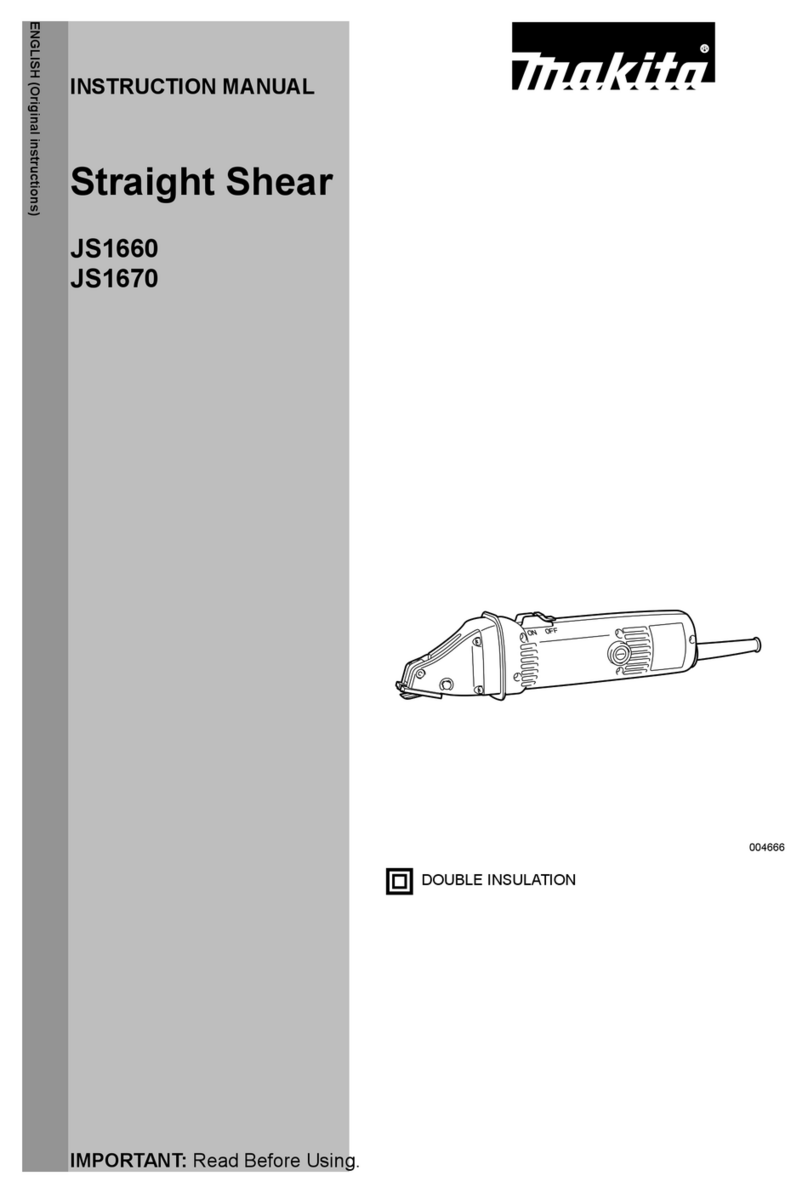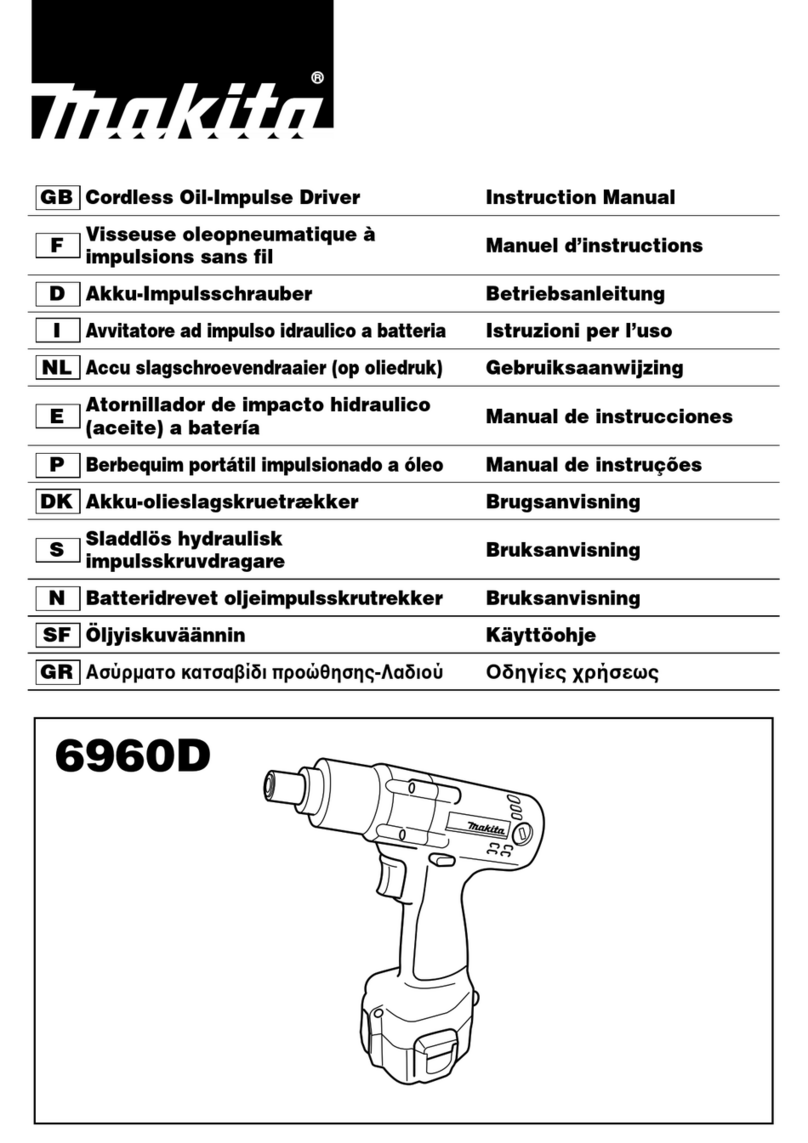
5
FUNCTIONAL DESCRIPTION
CAUTION:
• Always be sure that the tool is switched off and
unplugged before adjusting or checking function on
the tool.
Switch action
Fig.1
CAUTION:
• Before plugging in the tool, always check to see
that the slide switch actuates properly and returns
to the "OFF" position when the rear of the slide
switch is depressed.
• Switch can be locked in "ON" position for ease of
operator comfort during extended use. Apply
caution when locking tool in "ON" position and
maintain firm grasp on tool.
To start the tool, slide the slide switch toward the "I (ON)"
position. For continuous operation, press the front of the
slide switch to lock it.
To stop the tool, press the rear of the slide switch, then
slide it toward the "O (OFF)" position.
Permissible shearing thickness
Fig.2
The groove on the yoke serves as a thickness gauge for
shearing mild or stainless steel plate. If the material fits
within the groove, it is shearable.
The thickness of materials to be sheared depends upon
the type (strength) of the material. The maximum
shearing thickness is indicated in the table below in
terms of various materials. Attempting to shear materials
thicker than indicated will result in tool breakdown and/or
possible injury. Keep within the thickness shown in the
table.
Material Max. cutting thickness
(mm)
Tensile Strength
(N/mm
2
)
Mild steel (A) 400 1.6 (16 ga)
Hard steel (B) 600 1.2 (18 ga)
Stainless steel 800 0.8 (22 ga)
Aluminum plate 200 2.5 (13 ga)
006425
ASSEMBLY
CAUTION:
• Always be sure that the tool is switched off and
unplugged before carrying out any work on the tool.
Blade inspection
Before using the tool, check the blades for wear. Dull,
worn blades will result in poor shearing action, and the
service life of the tool will be shortened.
Rotating or replacing blades
Both the upper and lower blades have four cutting edges
on each side (the front and back). When the cutting edge
becomes dull, rotate both the upper and the lower blades
90° to expose new cutting edges.
When all eight edges are dull on both the upper and
lower blades, replace both blades with new ones. Each
time blades are rotated or replaced, proceed as follows.
Fig.3
Remove the blade securing bolts with the hex wrench
provided and then rotate or replace the blades.
Fig.4
Some tools have one washer between the upper blade
and the blade holder.When the tool has the washer, be
sure to use the thin washer when reassembling.
NOTE:
• No thin washers are used for the lower blade.
Fig.5
Install the upper blade and tighten the upper blade
securing bolt with the hex wrench. Press up on the upper
blade while tightening it.
Fig.6
After securing the upper blade, be sure that there is no
gap left between the upper blade and the beveled
surface of the blade holder.
Fig.7
When installing the lower blade onto the yoke, the lower
blade should be pressed against the yoke so as to be
contacting the beveled portions A and B of the yoke and
the tip C of the lower blade positioning screw while you
tighten the lower blade securing bolt. There must be no
clearance between A, B and C during installation.
NOTE:
• The lower blade positioning screw is
factory-assembled. Do not tamper with it.
Fig.8
OPERATION
Holding material and shearing method
WARNING:
• Before operating the tool, be sure to firmly tighten
the upper blade securing bolt and the lower blade
securing bolt. Loosen bolts may cause blades
coming off, resulting in a serious injury.
• When cutting, always place the shear on the
workpiece so that the material cut away is
positioned on the right side to the operator.
The materials for cutting should be fastened to the
workbench by means of workholders.
Fig.9
Always hold the tool firmly with one hand on housing. Do
not touch the metal part.
Keep the shear moving parallel with the material.
